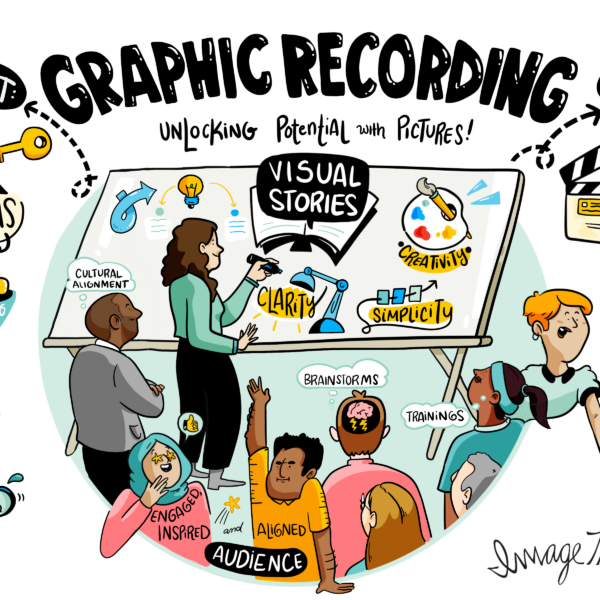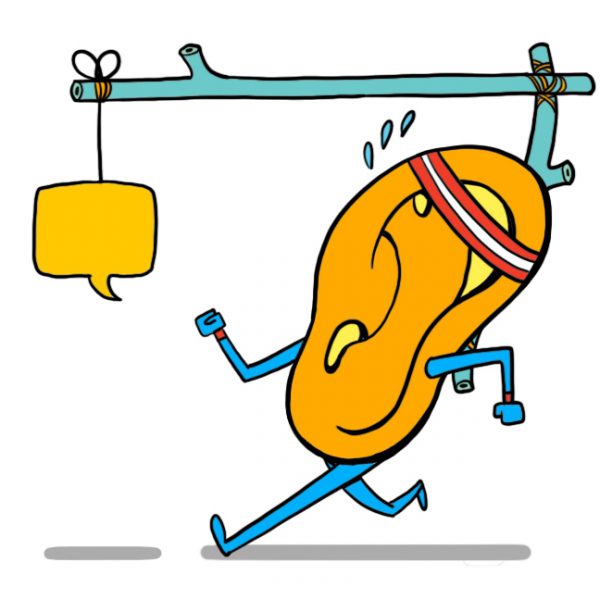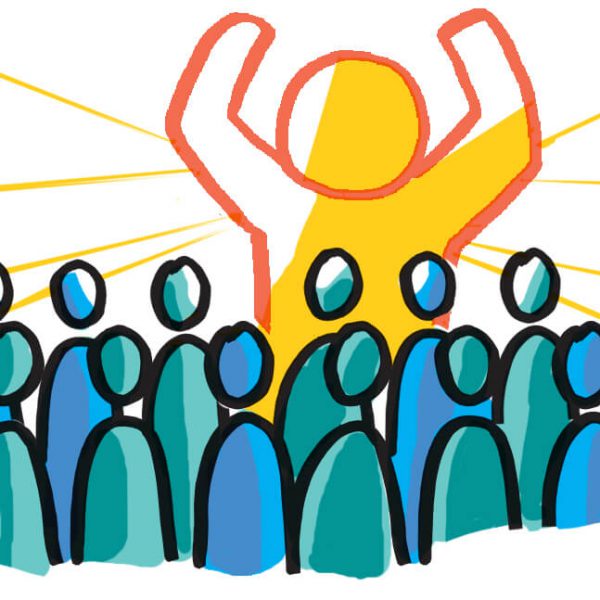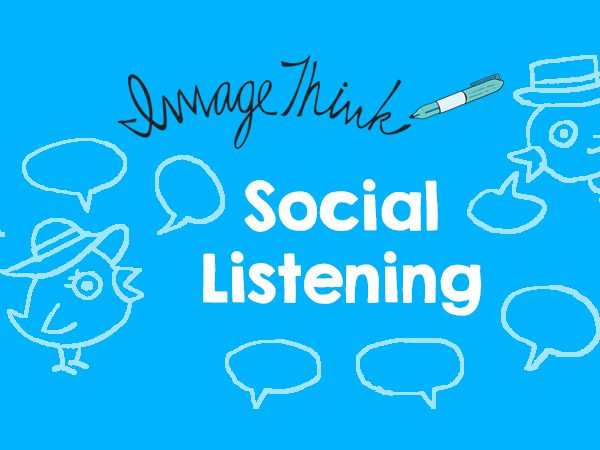There’s a discrepancy between listening and listening well. Of course, everyone thinks they’re a good listener and can distinguish between who a good listener is and who isn’t. But the truth of the matter is, listening in itself is an act of hard work.
To illustrate this point, consider what the average person can retain after a single conversation. According to Robinson, after listening to someone talk, we can immediately recall about half of what was said –even less if we didn’t like the subject matter being discussed or the person! About one hour after the conversation, we remember less than 20% of what we heard.
There are two ways we can rewire the way our brains to remember more and become better listeners: by practicing what is called active listening, and by aiding the action with visual support.
How Graphic Recorders listen
For people unfamiliar with graphic recording, and what we do here at ImageThink, here’s a simple definition. Graphic recorders listen for key ideas, and organize complex subject matter into digestible, visual chunks. Without the listening component, it would be pretty difficult to create those visuals that capture the total essence of the discussion.
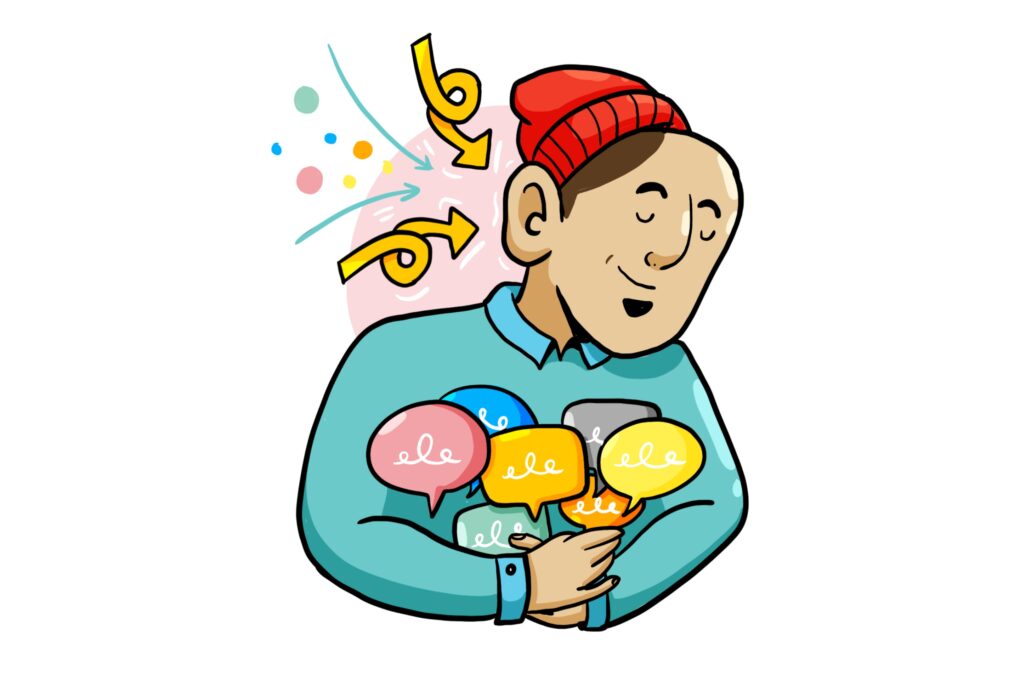
If you want to be a more active listener, you should learn from the best. ImageThink graphic recorders use these tips in order to gather key ideas and points, and visually depict them accurately.
1. Listen as if you’ll have to re-tell the information later
2. Ask questions to dive deeper into what the speaker means
3. Just listen – give your full undivided attention to who is speaking
Why visuals?
We’re glad you asked. As a graphic recording firm, we always advocate for the use of visuals in business practices – visuals help unlock perspectives and big ideas and pave the path forward by organize plans and projects with ease. Beyond our bias, research has found that visual assistance aids in memory retention more than any other medium.
Some of these findings report that visuals materials, when used in support of notes or verbal communication can improve memory retention by up to 400%. Psychologist Jackie Andrade found that people who doodle as part of notetaking remember 29% more information than people who don’t. In a professional environment, the findings are greater, with 60% of presentation listeners recalling visually enhanced content, compared to only 10% remembering exclusively verbal presentations.
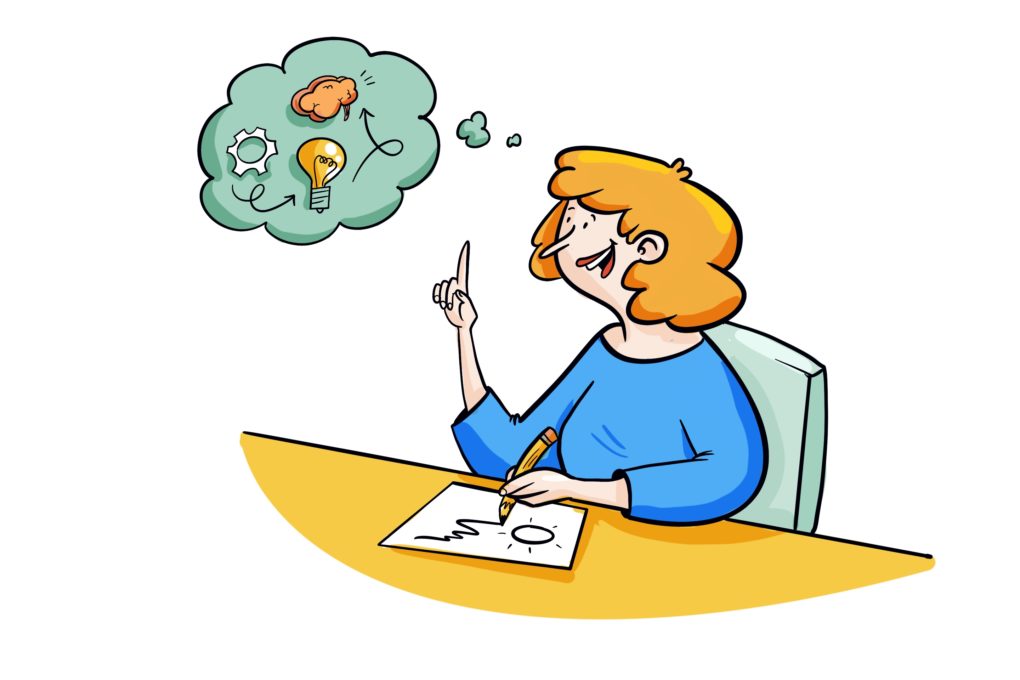
The power of visuals is clear, and those who use them experience the benefit of being able to retain information far more than those who don’t. It’s why clients hire us for their most crucial meetings and strategy sessions – they don’t want to miss a thing.
When we listen, we create connection
When visual elements are paired with responses gathered from active listening, something magical happens. It makes individuals feel seen and heard. Working visually tends to deepen this sense of connection among others, and has the effect of fostering trust, comfort, and togetherness.
A lot of the times, in the healthcare or pharmaceutical sector, this is exactly what our clients look for – a way to personalize the clinical or more technical. Our partnership with CurePSP did exactly that.
CurePSP is an organization that provides resources and support for patients with neurodegenerative disorders and their families. They sought our services for an organized virtual event including keynotes and activities to engage patients faced with specific neurodegenerative disorders to link those patients to resources and support groups.
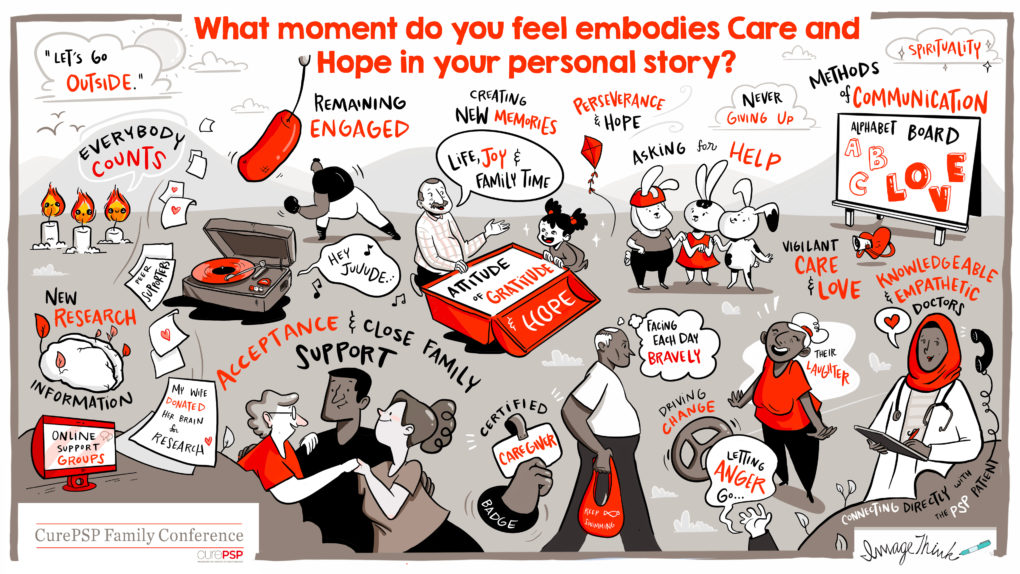
Throughout our partnership with CurePSP, ImageThink graphic recorders illustrated answers to questions surrounding patient experience, hopes, needs, and challenges. With visual metaphors and compassionate drawings, ImageThink allowed patient and family members to feel seen and heard, and drew a connection between patients and providers. The result? Healthcare providers had stronger empathy and understanding of who they serve and how to improve patient experience.
The proof is in the pictures – active listening when paired with visual translation provides a way to connect a company or brand to their audience, boosts memory retention, and makes individuals feel heard and seen. If you want us to lend you our ears, give ImageThink a call to start working with our graphic recorders today.
